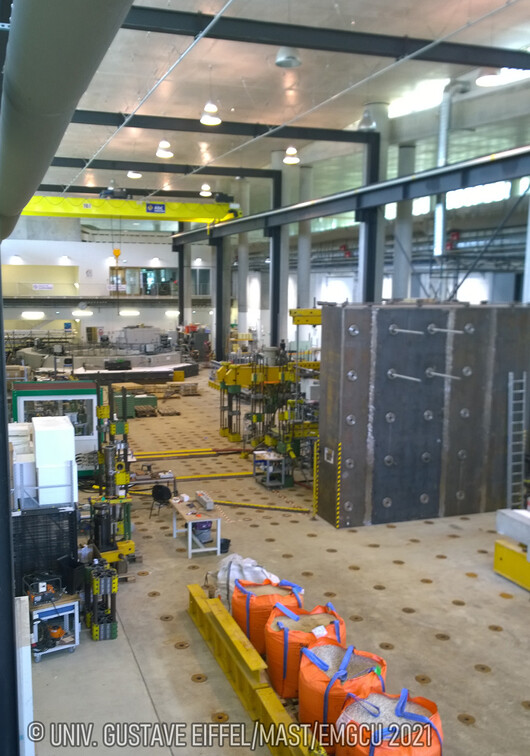The strong floor for large scale testing
The strong floor for large scale testing is one major facility of University Gustave Eiffel to lead research activities on the safety and serviceability of bridges and large civil engineering structures. The experiments carried out with such facility enable to set up and validate structural models and computation methods that take account the nonlinear behaviour of materials and structures. They help to analyze the pathologies and mechanical disorders that affect some structures, or to validate some repair techniques. Besides, they represent a necessary step in the validation of technical innovations, also considering the use of new materials in civil engineering structures.
Built in 1967 in Paris and in 2012 in Champs-sur-Marne when relocating IFSTTAR headquarters, the strong floor for large scale testing includes:
- A strong floor 60 m × 10 m with anchorage holes every 50 cm in the central area and every 1 m, each having a capacity of 50 t vertically in tension or compression (10 t horizontally) ;
- Two reaction walls 5 m high with anchorage holes every 1m, for a capacity of 100 t at the top of the reaction wall ;
- Associated modular superstructures (giant meccano) adapted to the various shapes of tested structural elements, thus making complex experimental set-ups entirely feasible.
- A wide array of both static (up to 200 t units) and dynamic (up to 80 t) for a maximum load capacity of 600 t for a quasi-static test with servo-control on a displacement, load or external signal using a monotonic, cyclical or random law ;
- More than 300 measuring devices and sensors, with associated conditioners; two main data acquisition systems and complementary or specific data recorders, and some devices for 3D image analysis.
Two crane bridges capable of holding 16 t each helps in manipulating structural components tested in the facility.
The structural testing floor counts a mechanician assuring construction of precise machines for measurements. Loadings are processed with the help of cylinders, holding up to 2000 kN of capacity for some of them. Therefore, cyclic loadings (of over a million cycles) are possible.
